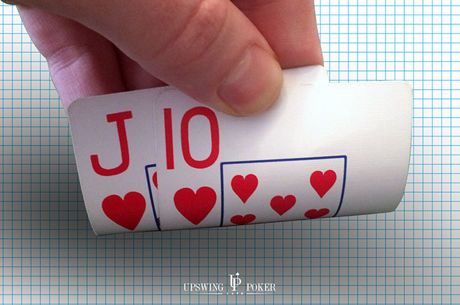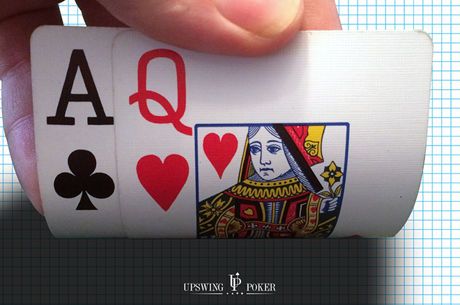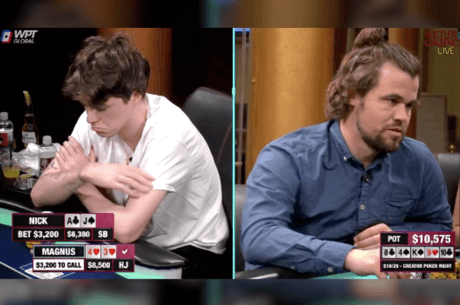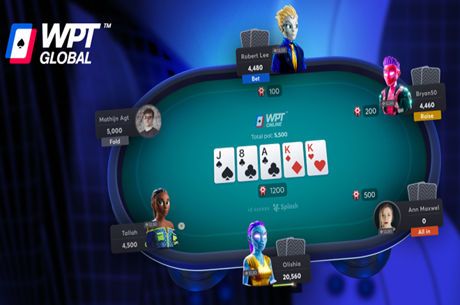How to Adjust (And CRUSH) Splashy Live Poker Games
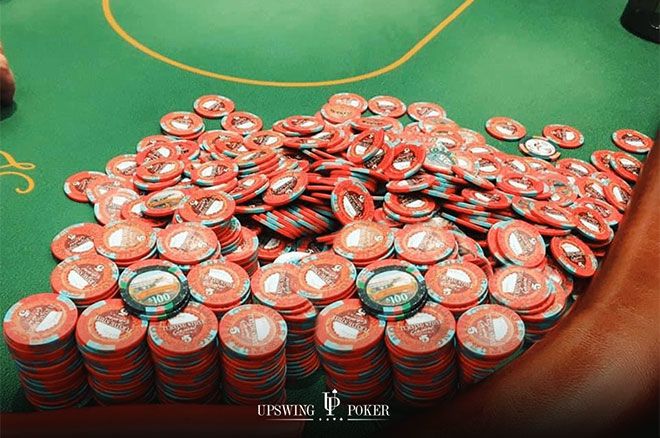
Table Of Contents
- What Makes a Game Splashy?
- 1. The biggest sign is that a lot of pots are multiway
- 2. Large open-raise sizes are also indicative of a splashy game
- 3. The last major sign is a willingness by players to commit a lot of chips with marginal hands
- How to Adjust Your Preflop Strategy
- Adjusting as the Preflop Raiser
- Adjusting Your Big Blind Defense
- Adjusting as the Preflop Caller In Position
- How to Adjust Your C-Betting Strategy
- Wrapping Up
We get questions like this one all the time at Upswing Poker:
"My local $1/$2 game is crazy. People call raises with all sorts of garbage hands and they never seem to fold a pair postflop, but I can’t seem to win!
"How should I adjust my strategy in this game?"
It seems like many players struggle with winning in what most would consider “soft” games.
To be fair, such games can be frustrating when you catch a cold run of cards. Who likes watching players with weak hands drag big pots while the stack in front of you dwindles away?
Today we’ll go over valuable strategic adjustments you can use to take advantage of splashy live games. Here’s what’s covered:
- What Makes a Game Splashy?
- How to Adjust Your Preflop Strategy
- C-Bet Strategy Adjustments
Let’s get started.
What Makes a Game Splashy?
There are three major signs that a game is splashy:
1. The biggest sign is that a lot of pots are multiway
Through the use of modern poker software, poker players have learned that pots should rarely be fought for by multiple players. Frequent multiway pots usually mean that there is at least one player (usually more) who is playing too many hands preflop.
2. Large open-raise sizes are also indicative of a splashy game
Preflop solvers have found out that the optimal preflop open-raise fluctuates between 2 and 3 big blinds (bb), generally hovering around 2.5 big blinds. In a splashy game, it is not uncommon to see an average open-raise size upwards of 5bb.
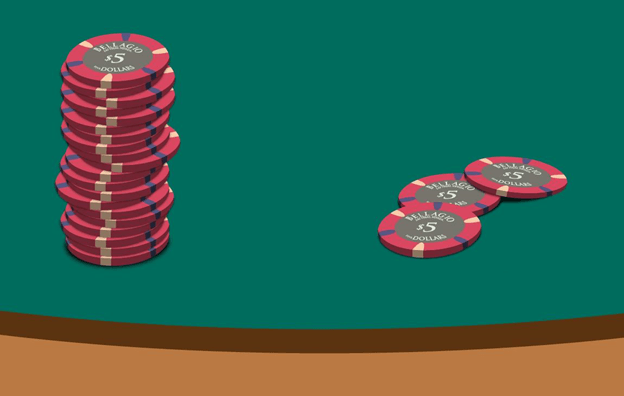
In theory, large raise sizes can be fine as long as they’re accompanied by tighter ranges, as the players are risking more chips to win the same amount (the blinds). That is not the case in splashy games, however. What you will usually find is that the players are raising with the same or even wider ranges than you’re used to playing against.
When your opponents greatly increase their raise size but don’t tighten their range, that’s super exploitable!
3. The last major sign is a willingness by players to commit a lot of chips with marginal hands
This can appear in many forms, including:
- Going all-in or calling huge raises preflop with very weak hands.
- Calling multiple bets postflop with weak pairs or draws.
- Raising with nonsensical hands.
Now, let’s get into some specific adjustments for these games.
Note: Want to know exactly which hands you should play in every common preflop situation? Get instant access to extensive preflop charts and lessons (for cash games and tournaments) when you join the Upswing Lab training course. Learn more now!
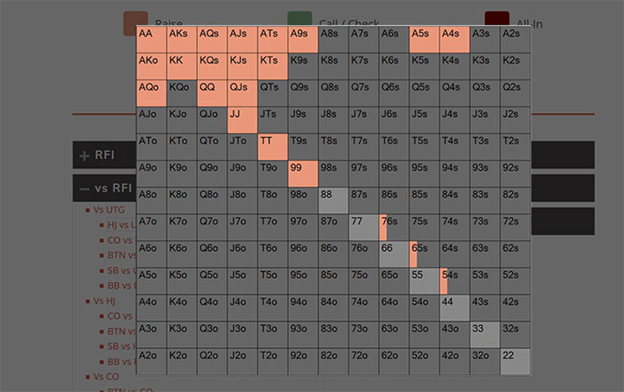
How to Adjust Your Preflop Strategy
This section covers adjusting as the:
- Preflop Raiser
- Big Blind Defender
- Preflop Caller In Position
Adjusting as the Preflop Raiser
As always, you should start by playing a solid preflop strategy, then adjust after gauging just how splashy the game is.
If you notice that most of the pots are going multiway, you should increase your raise size while keeping your ranges unchanged. If you normally raise to 3bb, jack it up to 4bb. Pots still going multiway? Add another blind.
As a general rule, you should keep adding one big blind to your raise size until you find that you are mostly playing heads-up pots.
That’s the easy adjustment that everyone should make. There is also an optional, more advanced move, but it can backfire if you don’t have deep knowledge of your opponents and/or the necessary postflop skills to pull it off…
This riskier approach is to also widen your raising range to include more good-but-marginal hands. The reason for this adjustment is pretty simple: your splashy opponent plays too many hands preflop and doesn’t have the knowledge or discipline to fold at the right times postflop.
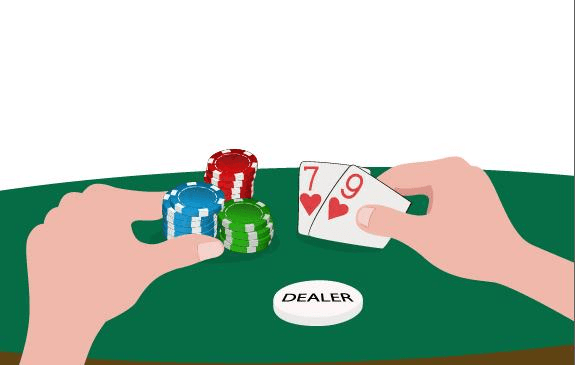
Raising with a slightly wider range allows you to play postflop with the splashy opponent more often, thus you become the benefactor of their mistakes more often. Again, be very careful with this adjustment, because it’s high variance and can easily backfire if you don’t know how to navigate with wider ranges postflop.
Adjusting Your Big Blind Defense
The first thing to consider is that you should not start defending a wide array of hands. This is a trap that many other players fall into, including most of your splashy opponents.
Regardless of the number of callers in front of you, you will be getting a very bad price to call because of the large raise size. This is one factor that should make you want to play tighter.
Furthermore, calling from the big blind (with most hands) actually becomes worse as more players join the pot for a couple of main reasons:
- Your equity decreases. It’s tougher to beat three hands than two or one.
- Your hands will realize less equity. You will see free/cheap turns less often when there are multiple players who can bet or raise behind you.
So even though your pot odds improve with more players in the pot, it is not enough to make up for the two points above.
With that in mind, let’s talk about the hands you should defend with.
The best hands to defend with are hands that dominate the other players’ ranges and/or hands that can potentially make the nuts. Examples of this include:
- Suited Ax hands
- Suited connectors
- Pocket pairs.
Pro tip: If you are well-versed in 3-bet pots, I suggest widening your squeeze range to include hands such as AJo, ATs+, KTs+, QTs+, JTs and 99+.
Adjusting as the Preflop Caller In Position
When facing a raise in position, you should 3-bet with a linear range consisting of your best playable hands. For example, if you’re in the cutoff facing a middle position raiser, you should 3-bet with 99+, ATs+, KJs+, and QJs.
The hands you should call in position are those that perform well in multiway pots. I’m talking about suited connectors, suited aces, and 22-88.
Further reading: The Starting Hands That Make the Most Money in Multiway Pots
How to Adjust Your C-Betting Strategy
Given that most of the pots will be multiway, the focus of this section will be on c-betting in multiway pots.
The most important thing to remember about c-betting in multiway pots is that the “burden of defense” is shared between multiple players. In other words, a bluff needs to go through multiple opponents in order to profit.
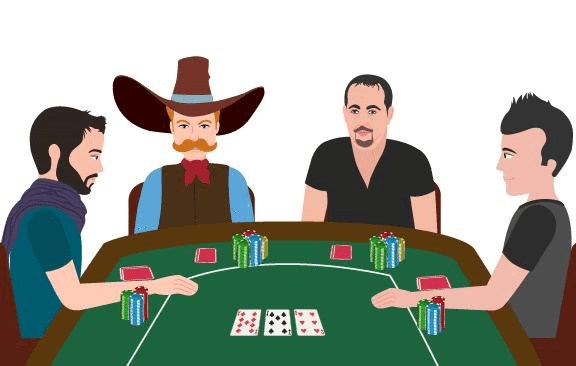
Let’s go over a bit of simple math to make this clearer.
Say you bet $50 into a $100 pot. In order for that bet to break even on its own (not including your hand’s equity), it needs to get through 33% of the time ($50 / ($100 + $50) = 0.33).
This means that the other players need to call cumulatively 67% of the time in order to stop you from profiting with your bluffs. Given that, on average, a preflop range will flop a made hand or a draw around 63% of the time, and that you are up against at least two players, it becomes very hard for a bluff to profit.
When you add the fact that the general tendency of weak players is to call too much, then trying to bluff multiple players becomes a very dicey proposition.
Betting with marginal value hands becomes dicier too. This is because the more players there are, the more likely it is one of them will have a two-pair or better. So, you may want to mix in some more checks on the flop with value hands as well.
Wrapping Up
You have to remember that the meta-strategy that you will be using in these games is very value-oriented and very tight postflop due to many pots being multiway.
With these things in mind, you will absolutely crush these games in the long-run, as long as you buckle your seat belt and prepare for some short term variance.
If you like this article or have any questions or feedback. feel free to leave a comment down below and I will do my best to answer.
Till’ next time, good luck, grinders!
Note: Ready to put your cash game skills to the test for free? Take this quiz and try to get 10 out of 10 correct (you’ll get a reward just for trying). Test your skills now!
Sponsor-generated content by Upswing Poker

